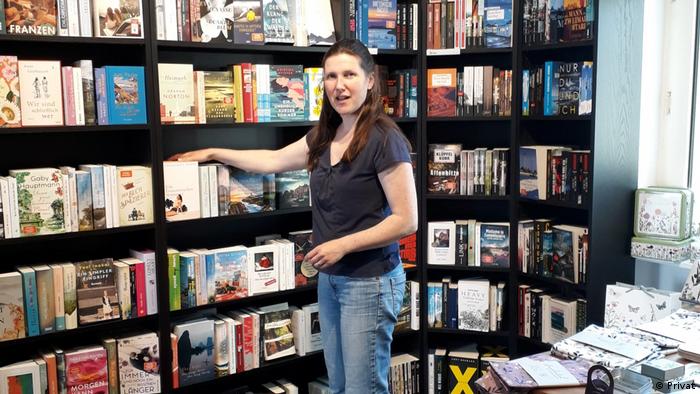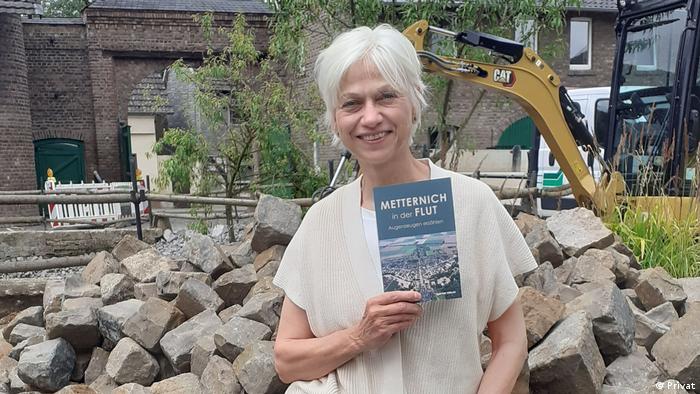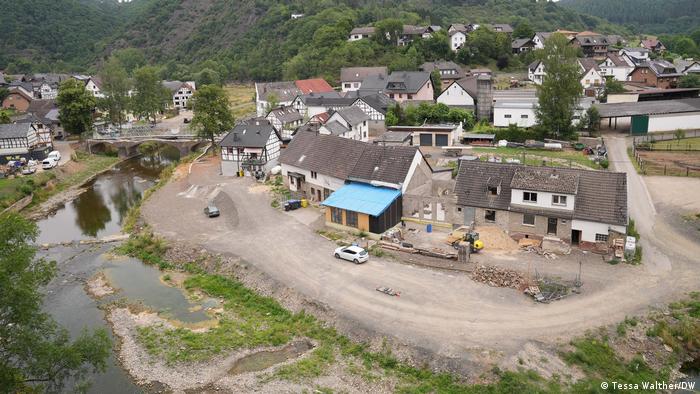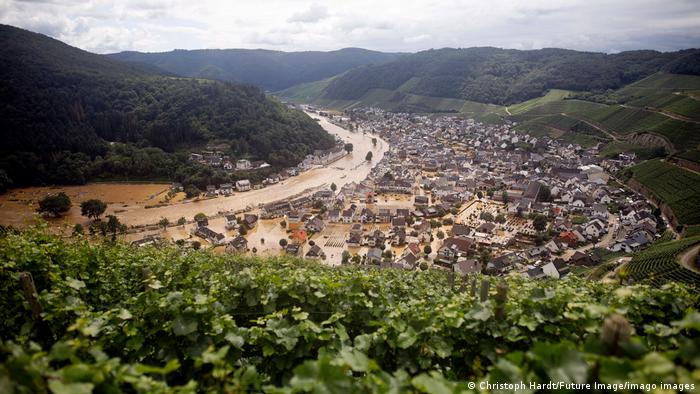[ad_1]
The damage of the flood disaster in the Ahr valley, Germany a year ago has not yet been eliminated. But people in the devastated areas want to go on with their lives, although the trauma is still not over.
“No, no, I never thought we would have such a disaster,” says Jessica Bälz. “We could imagine that the water could seep through the streets and that the basements would fill up. What about this? It seems to me that no one had imagined this.”

Jessica Bälz is a bookseller. Before the disaster, she had two bookstores. When the water level of the Ahr River rose unstoppably on the night of July 14th to 15th, she and her husband began placing sandbags in front of the bookstore. But there came a moment when the water came from all sides, the couple realized that nothing could be saved anymore. “Both bookstores were filled with water up to the ceiling,” Jessica recounts. “Total damage.”

Our world is divided into “before” and “after” the disaster
The flood disaster in July 2021 changed the bookseller’s life in a day. And not just her life. Heavy rains turned small streams and rivers in the states of North Rhine-Westphalia and Rhine-Palatinate into raging rivers. In the overflowing masses of water, 183 people lost their lives, 17,000 people lost their shelter and everything they had. At least 60,000 houses were destroyed, 28,000 businesses were severely damaged. The estimated damage is 33 billion euros.
Our world is divided into “before” and “after” the disaster. This is how Jessica describes the unimaginable on her website. She and her family were lucky though. Their house was located higher up, the water did not reach there. In no time she turned the downstairs of the house into a bookstore. One thing was clear. “It was necessary to look ahead.”
Marietta Thien is of the same opinion. The head of the publishing house Velbrück in Metternich, near Bonn, remembers the night of the disaster well. At 03:45 she was awakened by the sound of water. It looked like Niagara Falls, she recalls. To prevent the bursting of the earthen dam of the artificial lake Steinbachtal, the authorities had allowed the release of water without warning. But the flood wave engulfed the village and flooded the premises of the publishing house. “30,000 books, computers, furniture, everything was destroyed,” she says.
After the state of shock, the cleaning work began, as everywhere in the disaster area. Friends, neighbors, people we didn’t even know came to help. “The willingness to help last year was extraordinary,” recalls Thien.

Reconstruction aid comes late
The federation and the states promised immediate help, everywhere in Germany people gave donations, but today the payments arrive late to the citizens. “Immediate first aid was really given immediately, a week or two after the disaster,” says Thien. “Problems often lie with insurance companies, in damage assessments. As for the forms for receiving the reconstruction aid, I always hear: this is a complicated process, so I think, is it worth considering.”
Another problem is the lack of craftsmen. This slows down the rebuilding process. A year after the disaster, many destroyed houses have not yet been repaired, many roads have not been reconstructed, many bridges or train tracks are out of order.
Trauma still present
Added to these is residual trauma, which is reactivated every time it rains in torrents. At that time, the number of calls to the hotline service increased. Even Jessica Bälz still hasn’t gotten over the trauma of the disaster. “Yes, in a way it is present. You really think, yes, I have nothing to do with this anymore. But it is not something that is erased from memory overnight.”
In the days leading up to the 1st anniversary of the flood disaster, many recount what they experienced and it reawakens memories. In the days after the disaster, Jessica Bälz came to Bonn, where life went on as normal. “It was like a parallel world”, she recalls and confesses that she really felt better there, in the disaster area. “Everyone there knew what it was about, they knew what had happened”, says the bookseller.
The Ahr valley is still a construction site today, but in the tuk people have also planted small flower gardens again. Go ahead. “What we cannot define is the time dimension. We are talking about months, a year, five or ten years”, says Bälz.

Destroyed train tracks between Maysho and Rech
People in this area cannot wait that long, because their economic existence depends on reconstruction. The region affected by the flood disaster lives largely from tourism. 90% of tourism-related businesses will start again with tourism in the area. “This is a very positive signal”, says Dorothee Dickmanns, spokeswoman for the tourism office, Ahrtal. Tourist numbers are slowly increasing, says Dickmanns, who hopes that the reconstruction process will bring something positive. “Politics has promised to make Ahrtal a model region.”/Deutsche Welle
top channel
[ad_2]
Source link















